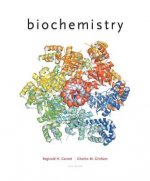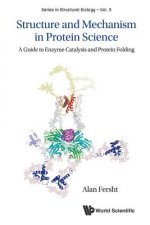
Kód: 01561590
Targeted Interference with Signal Transduction Events
Autor B. Groner
This book does nothing less than lay out the state of development of tomorrow s cancer drugs, directed against growth factors, growth factor receptors and intracellular signaling molecules with kinase activities. The sequencing of ... celý popis
- Jazyk:
 Angličtina
Angličtina - Väzba: Pevná
- Počet strán: 188
Nakladateľ: Springer-Verlag Berlin and Heidelberg GmbH & Co. KG, 2007
- Viac informácií o knihe

139.46 €

Skladom u dodávateľa v malom množstve
Odosielame za 12 - 17 dní
Potrebujete viac kusov?Ak máte záujem o viac kusov, preverte, prosím, najprv dostupnosť titulu na našej zákazníckej podpore.
Pridať medzi želanie
Mohlo by sa vám tiež páčiť
-

Cybering Democracy
33.04 € -

Analysis of Microarray Gene Expression Data
214.46 € -

Advanced Training in Anaesthesia
167.29 € -

Handbuch Balkan
58.42 € -

Entwicklung von Aufgabensets anhand des Kompetenzmodells DESI und des Kompetenzmodells IGLU
44.09 € -

Klassische und iberische Reitkunst
19.84 € -2 % -

Blumen zeichnen mit Buntstiften
5.52 €
Darčekový poukaz: Radosť zaručená
- Darujte poukaz v ľubovoľnej hodnote, a my sa postaráme o zvyšok.
- Poukaz sa vzťahuje na všetky produkty v našej ponuke.
- Elektronický poukaz si vytlačíte z e-mailu a môžete ho ihneď darovať.
- Platnosť poukazu je 12 mesiacov od dátumu vystavenia.
Viac informácií o knihe Targeted Interference with Signal Transduction Events
Nákupom získate 345 bodov
 Anotácia knihy
Anotácia knihy
This book does nothing less than lay out the state of development of tomorrow s cancer drugs, directed against growth factors, growth factor receptors and intracellular signaling molecules with kinase activities. The sequencing of the human genome and insights into signaling pathways have contributed to the understanding of cancer etiology and the development of new, improved cancer drugs such as Herceptin and Glivec. The deregulation of pathways due to mutated cancer genes provides the conceptual basis for future progress. Will it be possible to derive more efficient cancer drugs?Two aspects of biological research are major contributors to the progress in the understanding of cancer etiology and the development of new and improved cancer drugs. The sequencing of the human genome provides us with a basic overview of all our genes and gene products, and the insights into signaling pathways allow us to align crucial components of cellular regulation into an ordered functional context. A comparison of the genes in normal and in tumor cells shows that mutations in the DNA of a limited set of genes are responsible for the multiple stages of tumorigenesis and metastasis. Many of the affected genes, including oncogenes, tumor suppressor genes and genome stability genes, can be fitted into pathways. They encode molecules that stimulate tumor cell division or inhibit their death. Matching of therapeutic intervention with insights into the underlying molecular disease mechanism has already led to the development of drugs such as Herceptin and Glivec. The deregulation of pathways as a consequence of the altered biochemical function of mutated cancer genes provides the conceptual basis for future progress. Will it be possible to extrapolate this principle and derive more efficient drugs targeting cancer pathway components? Promising cell surface molecules, potential targets of monoclonal antibodies, and intracellular molecules with enzymatic activity, potential targets for low-molecular-weight synthetic inhibitors, have been identified. Our ability to predict the consequences of inhibition of such components, however, is still limited. For this reason, the development of targeted drugs remains a complex process, comprising rational and empirical elements. The state of development of tomorrow s cancer drugs, directed against growth factors, growth factor receptors and intracellular signaling molecules with kinase activities, is described in this book.
 Parametre knihy
Parametre knihy
Zaradenie knihy Knihy po anglicky Mathematics & science Biology, life sciences Biochemistry
139.46 €
- Celý názov: Targeted Interference with Signal Transduction Events
- Autor: B. Groner
- Jazyk:
 Angličtina
Angličtina - Väzba: Pevná
- Počet strán: 188
- EAN: 9783540312086
- ISBN: 3540312080
- ID: 01561590
- Nakladateľ: Springer-Verlag Berlin and Heidelberg GmbH & Co. KG
- Hmotnosť: 618 g
- Rozmery: 244 × 170 mm
- Dátum vydania: 05. June 2007
Obľúbené z iného súdka
-

Modern Optical Spectroscopy
119.30 € -

Wilson and Walker's Principles and Techniques of Biochemistry and Molecular Biology
58.01 € -

DHEA Breakthrough
8.99 € -13 % -

Biochemistry, Fourth Edition International Adaptation
76.94 € -2 % -

Biochemistry and Molecular Biology
69.06 € -

Ice Cream
111.93 € -

Schaum's Outline of Biochemistry, Third Edition
32.43 € -14 % -

Voet's Principles of Biochemistry, 5th Edition Glo bal Edition
76.94 € -2 % -

Biochemistry and Molecular Biology of Plants 2e
129.94 € -4 % -

Exercise Biochemistry
131.07 € -11 % -

Female Brain
17.18 € -9 % -

Introduction to Bioinformatics
60.26 € -

Biochemistry
441.62 € -

Machinery of Life
31.81 € -18 % -

BIOS Instant Notes in Biochemistry
37.03 € -

Biochemistry
441.32 € -

Protein Structure and Function
81.34 € -6 % -

Medical Biochemistry Principles for Medical Students
26.18 € -

Cell: A Very Short Introduction
10.12 € -23 % -

Advanced Molecular Genetics
177.93 € -

Biochemistry
56.68 € -

Plant Biochemistry
142.84 € -

Introduction to Protein Structure
109.07 € -

Environmental Soil Biology
139.46 € -

Polar Lipids
131.68 € -

Sensory Evaluation of Food
100.88 € -

Biochemistry: A Very Short Introduction
9.10 € -24 % -

Structure And Mechanism In Protein Science: A Guide To Enzyme Catalysis And Protein Folding
89.93 € -

Marks' Essentials of Medical Biochemistry
130.45 € -

Medical Biochemistry
160.44 € -

Essentials of Glycobiology, Third Edition
219.48 € -

Pulp and Paper Industry
227.77 € -

Introduction to Proteins
120.12 € -

Introduction to Protein Science
82.05 € -

Chemistry and Biochemistry of the Amino Acids
125.75 € -

Photosynthesis And Bioenergetics
170.67 € -

Case Files Biochemistry 3/E
51.97 € -

Biochemistry of Lipids, Lipoproteins and Membranes
113.98 € -

Exploring Proteins
74.48 € -

Bioavailability, Leachability, Chemical Speciation, and Bioremediation of Heavy Metals in the Process of Composting
166.88 € -

Introduction to Bioorganic Chemistry and Chemical Biology
108.86 € -

Protein Engineering Techniques
70.80 € -

Bioenergetics
89.01 € -

Chemistry of Life
14.42 € -23 % -

Proteomics Protocols Handbook
420.75 € -

Growth Hormone Secretagogues in Clinical Practice
477.85 € -

Textbook of Biochemistry with Clinical Correlations
337.56 € -

GHRH, GH, and IGF-I
276.98 € -

Physico-chemical Properties of Jackfruit
63.64 €
Osobný odber Bratislava a 2642 dalších
Copyright ©2008-24 najlacnejsie-knihy.sk Všetky práva vyhradenéSúkromieCookies


 21 miliónov titulov
21 miliónov titulov Vrátenie do mesiaca
Vrátenie do mesiaca 02/210 210 99 (8-15.30h)
02/210 210 99 (8-15.30h)